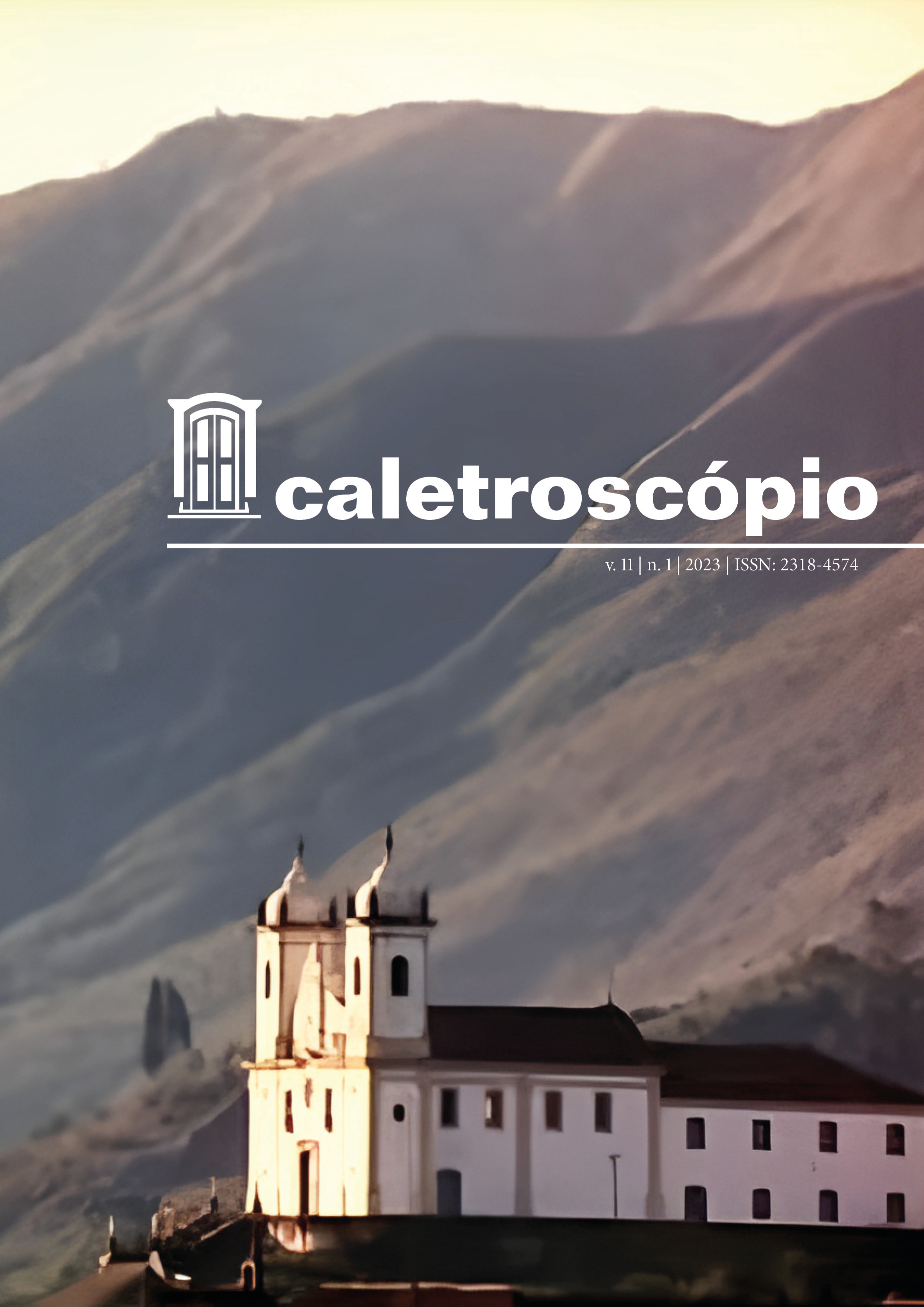O “Triunfo Eucharistico” e a “Arte Retorica" na festa barroca (Vila Rica, 1733)
A orientação persuasiva na "Previa Alocutoria", de Simão Ferreira Machado
Abstract
In this article, we examine aspects of the booklet “Triunfo Eucharistico - exemplar da cris tandade lusitana”, in which Simão Ferreira Machado narrates the first Baroque Feast in the mining region, in the Capitania of Minas, on the occasion of the transfer of the Most Holy Sacrament from the church of Senhora do Rosário dos Pretos to the new temple of Senhora do Pilar, in Vila Rica, 1733. The emphasis is on the examination of the “Previa Allocutoria” - the presentation section of the work, under the prism of Aristotle's Arte Retórica, and discourse theories such as Semiolinguistics (CHARAUDEAU, 2006 and 2022) and Argumentation (PERELMAN E OLBRECHTS-TYTECA, 1996). In view of the observation about his persuasive orientation, we seek to understand two issues: the first, how does the persuasive orientation occurs in relation to the sociodiscursive imaginaries mobilized by the narrator; the second, how he constitutes his audience or readership, as the ideal addressee of the story. We realize that, besides religious persuasion – which would be expressed in the relationship between “religious authority” and “devotees” – there are other relevant elements, such as the social configuration itself and the mobilization of imaginaries of “truth” or “revelation”, as political, doctrinal and ideological precepts.Downloads
References
AGAMBEN, Giorgio. O que é um dispositivo? [2006]. In: O que é o contemporâneo? E outros ensaios. Trad. Vinicius Nicastro Honesko. Chapecó: Argos, 2009.
ARGAN, Giulio Carlo. Imagem e persuasão: ensaios sobre o barroco. Organização de Bruno Contardi. Tradução de Maurício Santana Dias. São Paulo: Companhia das Letras, 2004, 568p.
AVILA, Affonso. Festa Barroca: Ideologia e Estrutura. In PIZARRO, Ana (Org.) América Latina: Palavra, Literatura e Cultura, vol. 1, A Situação Colonial. Campinas: UNICAMP; Fundação Memorial da América Latina, 1993, p. 235-263.
AVILA, Afonso. Resíduos seiscentitas em Minas. Vol. 6, Belo Horizonte: Secretaria de Estado da Cultura MG / Arquivo Público Mineiro, 2006.
BEZERRA DE MENEZES, Eduardo Diatahy. O Barroco como cosmovisão matricial do Ethos Cultural Brasileiro. Revista Ciências Sociais, 39-I, Universidade Federal do Ceará, p. 52-65.
HAUSER, Arnold. História Social da Literatura e da Arte. Tradução de Walter H. Greenen. 4ª. Edição em português. São Paulo: Mestre Jou, 1982 [Tomo I]
CAMPOS, Adalgisa Arantes. Introdução ao Barroco Mineiro. Belo Horizonte: Crisálida, 2006.
CANTOS, Angel López. Juegos, fiestas y diversiones em la América Española. Madrid: Editorial Mapfre AS, 1992
CASCUDO, Luis da Câmara. Docopm[arop dp Fpçcçpre Brasileiro. 10ª. Ed. São Paulo: Ediouro, 2005.
CENTURIÕ, Luiz Ricardo Michaelsen. A cidade colonial no Brasil. Homo Plasticus, 2017.
CHARAUDEAU, Patrick. A manipulação da verdade. São Paulo: Contexto, 2022.
MACHADO, Simão Fereira. Triunfo Eucharistico: Exemplar da Cristandade Lusitana. Lisboa Occidental, 1734. Disponível em: https://purl.pt/34248 . Acesso em 27 de jan.021.
REBOUL, Olivier. Introdução à retórica. São Paulo: Martins Fontes, 2006.
SOUZA, Laura de Mello e. Desclassificados do ouro: A pobreza mineira no século XVIII. Rio de Janeiro: Edições Graal, 1992.
TINHORÃO, José Ramos. As festas no Brasil colonial. Editora 34, 2000.
VENANCIO, Renato Pinto. Antes de Minas: fronteiras coloniais e populações indígenas. In; história de Minas Gerais. As Minas setecentistas. Belo Horizonte: Autêntica, 2007.
WEISBCH, Werner. El Barroco, arte de la Contrarreforma. Madrid: Espasa-Calpe, 1948.
WOLFFLIN, Heinrich. Renascimiento y barroco. Grupo Planeta (GBS) 1986.
Copyright (c) 2023 Caletroscópio

This work is licensed under a Creative Commons Attribution-NonCommercial-NoDerivatives 4.0 International License.
The publication Caletroscopio shall retain for a period of three years all authorial rights for works accepted for publication: articles, reviews, translations, etc. Outside this restriction, these works are licenced through Licença Creative Commons-Atribuição-NãoComercial-SemDerivações 4.0 Internacional.
Upon expiry of this period, in the event that the author publishes the text, even when making alterations to the original, we would ask authors to include as a footnote, the information that a previous version of the article was published in the Revista Caletroscópio, citing the appropriate references.


